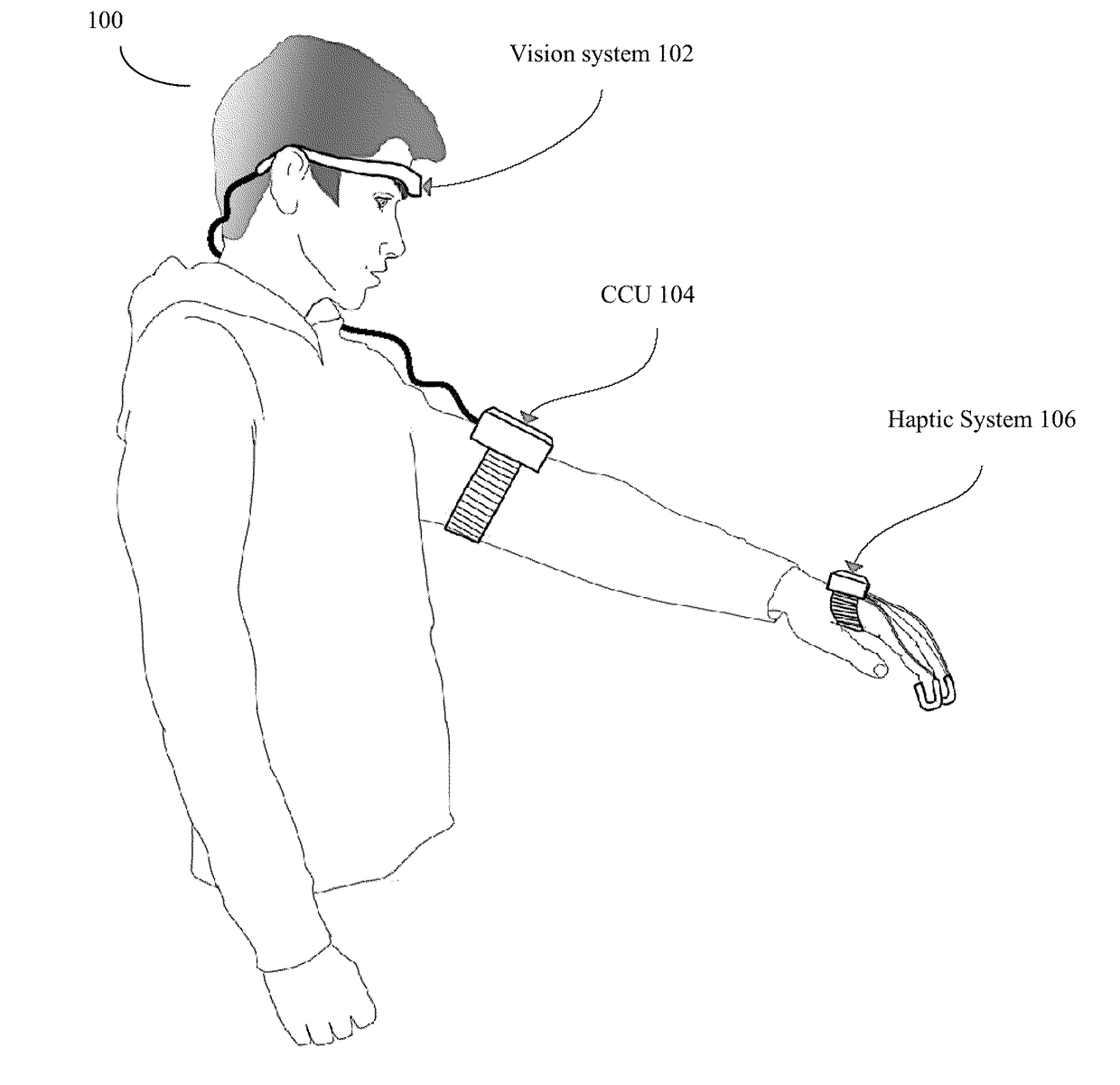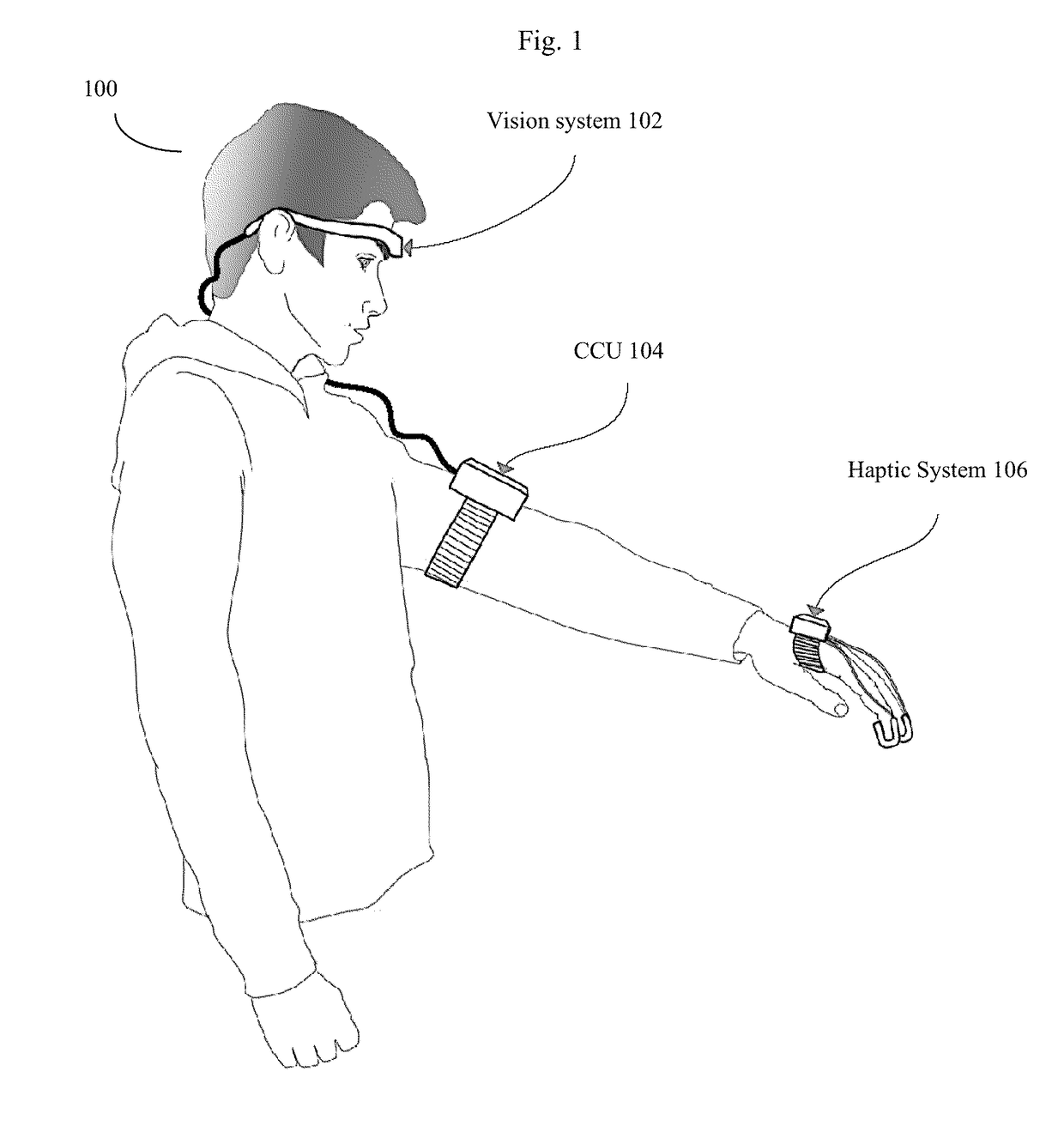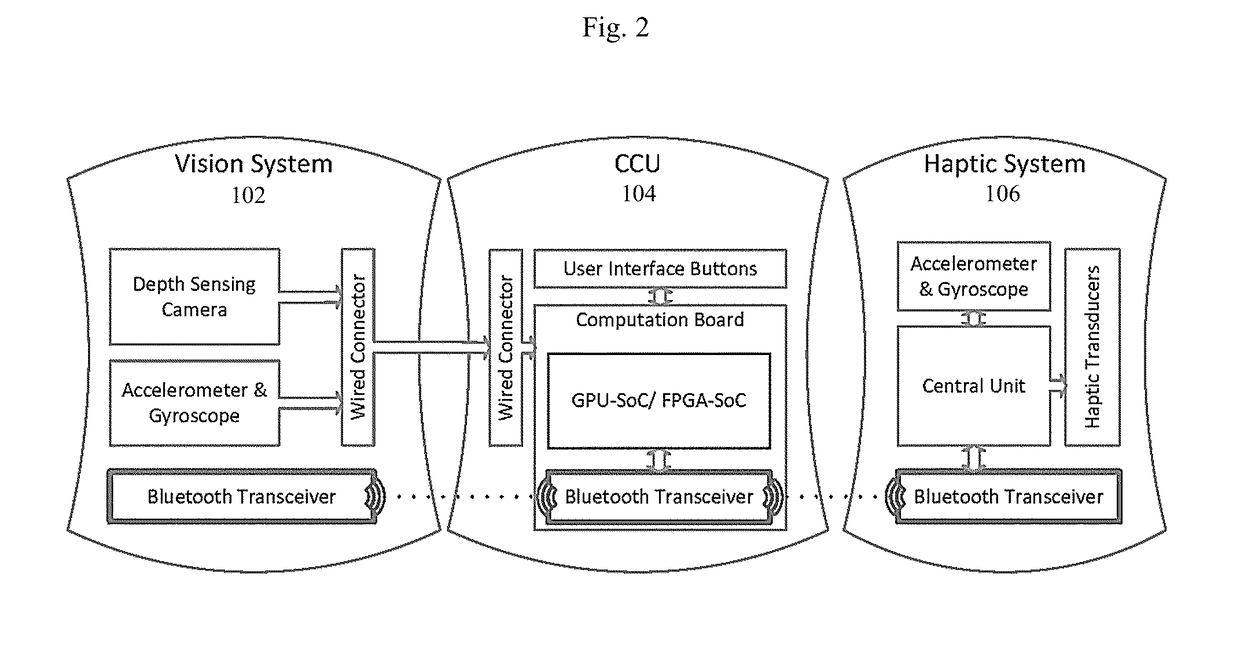Remote perception of depth and shape of objects and surfaces
a technology of depth and shape, applied in the field of remote perception of objects and surfaces, can solve the problems of inability to intuitively navigate using visual perception, inability to provide visual information in many circumstances, and inability to use intuitive navigation methods
- Summary
- Abstract
- Description
- Claims
- Application Information
AI Technical Summary
Benefits of technology
Problems solved by technology
Method used
Image
Examples
Embodiment Construction
[0037]Definitions:
[0038]Virtual pointer: direction of user interest as determined by various pointing sensors. Image patch: A narrow angle patch or surface in both the horizontal and vertical directions, with dimensions between about 1 degree to about 10 degrees in the horizontal and vertical, which surrounds the virtual pointer, and is somewhat analogous to the region of sharp vision in the human eye. Pointing direction: the image patch or surface designated by a particular pointing vector. As the image patch (surface) shrinks in size, the pointing direction tends to approximate the virtual pointer, and thus the terms are sometimes used interchangeably when the context is clear. Pointing region (also known as the field of view or FOV). A wider angle “patch” or “surface” typically surrounding both the virtual pointer and the pointing direction and the narrower “image patch”. The field of view will often have dimensions between about 45 degrees to 180 degrees in both the horizontal a...
PUM
 Login to View More
Login to View More Abstract
Description
Claims
Application Information
 Login to View More
Login to View More - R&D
- Intellectual Property
- Life Sciences
- Materials
- Tech Scout
- Unparalleled Data Quality
- Higher Quality Content
- 60% Fewer Hallucinations
Browse by: Latest US Patents, China's latest patents, Technical Efficacy Thesaurus, Application Domain, Technology Topic, Popular Technical Reports.
© 2025 PatSnap. All rights reserved.Legal|Privacy policy|Modern Slavery Act Transparency Statement|Sitemap|About US| Contact US: help@patsnap.com



